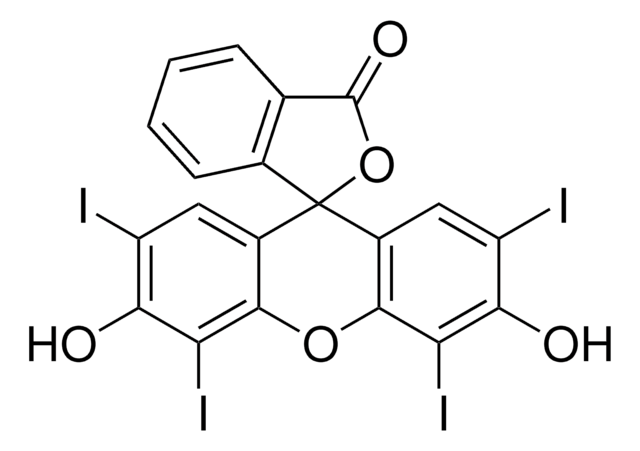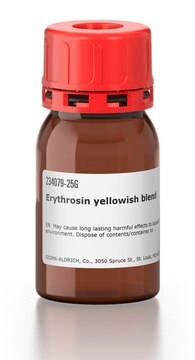45690
Erythrosin extra bluish
for microscopy (Bact., Hist.)
Synonym(s):
2′,4′,5′,7′-Tetraiodofluorescein disodium salt, Acid Red 51, Iodoeosin
About This Item
Recommended Products
grade
for microscopy (Bact., Hist.)
Quality Level
form
solid
technique(s)
titration: suitable
SMILES string
[Na+].[Na+].[O-]c1c(I)cc2c(Oc3c(I)c([O-])c(I)cc3C24OC(=O)c5ccccc45)c1I
InChI
1S/C20H8I4O5.2Na/c21-11-5-9-17(13(23)15(11)25)28-18-10(6-12(22)16(26)14(18)24)20(9)8-4-2-1-3-7(8)19(27)29-20;;/h1-6,25-26H;;/q;2*+1/p-2
InChI key
RAGZEDHHTPQLAI-UHFFFAOYSA-L
Looking for similar products? Visit Product Comparison Guide
General description
Signal Word
Warning
Hazard Statements
Precautionary Statements
Hazard Classifications
Acute Tox. 4 Oral - Aquatic Chronic 2
Storage Class Code
11 - Combustible Solids
WGK
WGK 1
Flash Point(F)
359.6 °F - closed cup
Flash Point(C)
182 °C - closed cup
Personal Protective Equipment
Choose from one of the most recent versions:
Already Own This Product?
Find documentation for the products that you have recently purchased in the Document Library.
Customers Also Viewed
Our team of scientists has experience in all areas of research including Life Science, Material Science, Chemical Synthesis, Chromatography, Analytical and many others.
Contact Technical Service







